
Ballet is a type of performance dance that originated during the Italian Renaissance in the fifteenth century and later developed into a concert dance form in France and Russia. It has since become a widespread and highly technical form of dance with its own vocabulary. Ballet has been influential globally and has defined the foundational techniques which are used in many other dance genres and cultures. Various schools around the world have incorporated their own cultures. As a result, ballet has evolved in distinct ways.
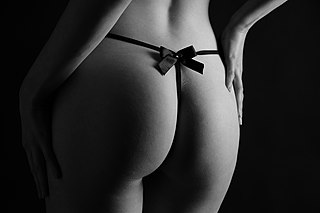
A G-string is a garment consisting of a narrow piece of material that barely covers the genitals, a string-like piece that passes between the buttocks, and a very thin waistband around the hips. There are designs for both women and men. Men's G-strings are similar to women's but have a front pouch that covers the genitals. G-strings are typically worn as underwear or swimwear or as part of the costume of an exotic dancer.

Sadler's Wells Theatre is a London performing arts venue, located in Rosebery Avenue, Islington. The present-day theatre is the sixth on the site. Sadler's Wells grew out of a late 17th-century pleasure garden and was opened as a theatre building in the 1680s.

A tutu is a dress worn as a costume in a classical ballet performance, often with attached bodice. It may be made of tarlatan, muslin, silk, tulle, gauze, or nylon. Modern tutus have two basic types: the Romantic tutu is soft and bell-shaped, reaching the calf or ankle; the Classical tutu is short and stiff, projecting horizontally from the waist and hip.
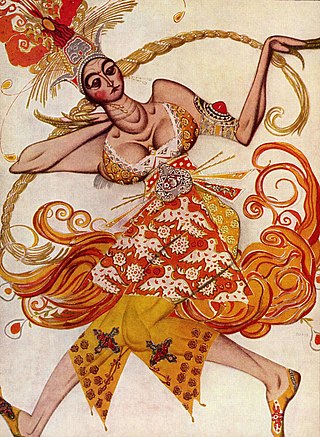
The Firebird is a ballet and orchestral concert work by the Russian composer Igor Stravinsky. It was written for the 1910 Paris season of Sergei Diaghilev's Ballets Russes company; the original choreography was by Michel Fokine, who collaborated with Alexandre Benois and others on a scenario based on the Russian fairy tales of the Firebird and the blessing and curse it possesses for its owner. It was first performed at the Opéra de Paris on 25 June 1910 and was an immediate success, catapulting Stravinsky to international fame and leading to future Diaghilev–Stravinsky collaborations including Petrushka (1911) and The Rite of Spring (1913).
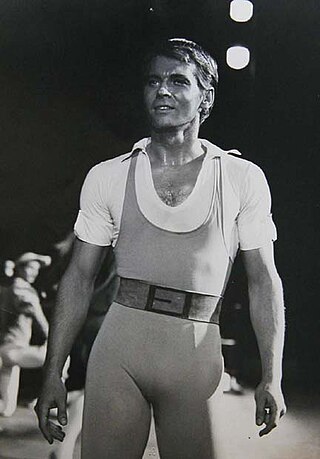
David Adams, was a Canadian ballet dancer and a founding member of the National Ballet of Canada.

Pierre Georges Albert François Henry was a French composer known for his significant contributions to musique concrète.
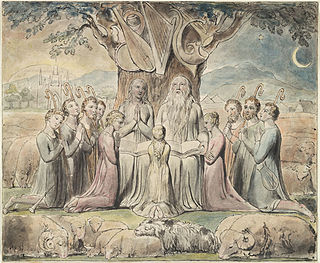
Job: A Masque for Dancing is a one-act ballet produced in 1931. The scenario is by Geoffrey Keynes, the choreography by Ninette de Valois, and the music by Ralph Vaughan Williams. The ballet is based on the Book of Job from the Hebrew Bible and was inspired by the illustrated edition by William Blake. The music was first given in concert in 1930 and the ballet had its stage premiere on 5 July 1931. It was the first ballet to be produced by an entirely British creative team. It was taken into the repertoire of the Vic-Wells Ballet and its successors, and has been intermittently revived.

The Pavane in F-sharp minor, Op. 50, is a short work by the French composer Gabriel Fauré written in 1887. It was originally a piano piece, but is better known in Fauré's version for orchestra and optional chorus. It was first performed in Paris in 1888, becoming one of the composer's most popular works.
Opéra-ballet is a genre of French Baroque lyric theatre that was most popular during the 18th century, combining elements of opera and ballet, "that grew out of the ballets à entrées of the early seventeenth century". It differed from the more elevated tragédie en musique as practised by Jean-Baptiste Lully in several ways. It contained more dance music than the tragédie, and the plots were not necessarily derived from classical mythology and allowed for the comic elements, which Lully had excluded from the tragédie en musique after Thésée (1675). The opéra-ballet consisted of a prologue followed by a number of self-contained acts, often loosely grouped around a single theme. The individual acts could also be performed independently, in which case they were known as actes de ballet.
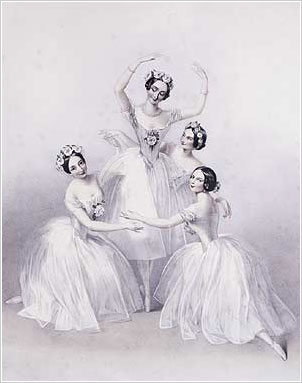
Pas de quatre is a French term used to identify a ballet dance for four people. Pas de quatre are usually plotless dances performed as divertissements within the context of a larger work. However, narrative pas de quatre and pas de quatre that stand alone are not unknown.
The Original Ballet Russe was a ballet company established in 1931 by René Blum and Colonel Wassily de Basil as a successor to the Ballets Russes, founded in 1909 by Sergei Diaghilev. The company assumed the new name Original Ballet Russe after a split between de Basil and Blum. De Basil led the renamed company, while Blum and others founded a new company under the name Ballet Russe de Monte-Carlo. It was a large scale professional ballet company which toured extensively in Europe, Australia and New Zealand, the United States, and Central and South America. It closed down operations in 1947.

Douglas Dunn is an American dancer and choreographer based in New York City.
Tschaikovsky Piano Concerto No. 2, also titled Ballet Imperial, is a ballet choreographed by George Balanchine to Tchaikovsky's Piano Concerto No. 2. Ballet Imperial was choreographed for American Ballet Caravan's 1941 South American tour, and was aimed at showing that the Americans were capable of the classical ballet traditions. The ballet pays tribute to Tchaikovsky, the classical ballet choreographer Marius Petipa, and Imperial Saint Petersburg, where Balanchine received his ballet training. The ballet featured academic steps and alludes to Imperial Russia through the costumes and scenery. Ballet Imperial premiered on June 25, 1941, at Teatro Municipal, Rio de Janeiro.

Jean-Baptiste Lully was a French composer, dancer and instrumentalist of Italian birth, who is considered a master of the French Baroque music style. Best known for his operas, he spent most of his life working in the court of Louis XIV of France and became a French subject in 1661. He was a close friend of the playwright Molière, with whom he collaborated on numerous comédie-ballets, including L'Amour médecin, George Dandin ou le Mari confondu, Monsieur de Pourceaugnac, Psyché and his best known work, Le Bourgeois gentilhomme.

The veena, also spelled vina, is any of various chordophone instruments from the Indian subcontinent. Ancient musical instruments evolved into many variations, such as lutes, zithers and arched harps. The many regional designs have different names such as the Rudra veena, the Saraswati veena, the Vichitra veena and others.
Peter Lancelot Williams was an English designer and dance critic. He founded and edited the monthly magazine Dance and Dancers for thirty years, wrote columns for national newspapers and was an influential chairman of various committees and trusts.
Hérodiade de Stéphane Mallarmé: Recitation orchestrale is a composition by Paul Hindemith written in June 1944 on commission from Martha Graham, supported by funds from the Elizabeth Sprague Coolidge Foundation. The ballet premiered under the title of Herodiade in the Elizabeth Sprague Coolidge Auditorium at the Library of Congress in Washington DC. The premiere took place on 30 October 1944, sharing the program with Aaron Copland's Appalachian Spring and Darius Milhaud's Jeux du printemps, with Martha Graham and May O'Donnell in the leading roles. The choreography was by Martha Graham, stage design was by the Japanese American sculptor Isamu Noguchi, and costumes by Edythe Gilfond.
Johann Adam was a German violist and composer of the Baroque era.

Soirées musicales,, Op. 9, is a suite of five movements by Benjamin Britten, using music composed by Gioachino Rossini. The suite, first performed in 1937, derives its title from Rossini's collection of the same name, dating from the early 1830s, from which Britten drew much of the thematic material.













